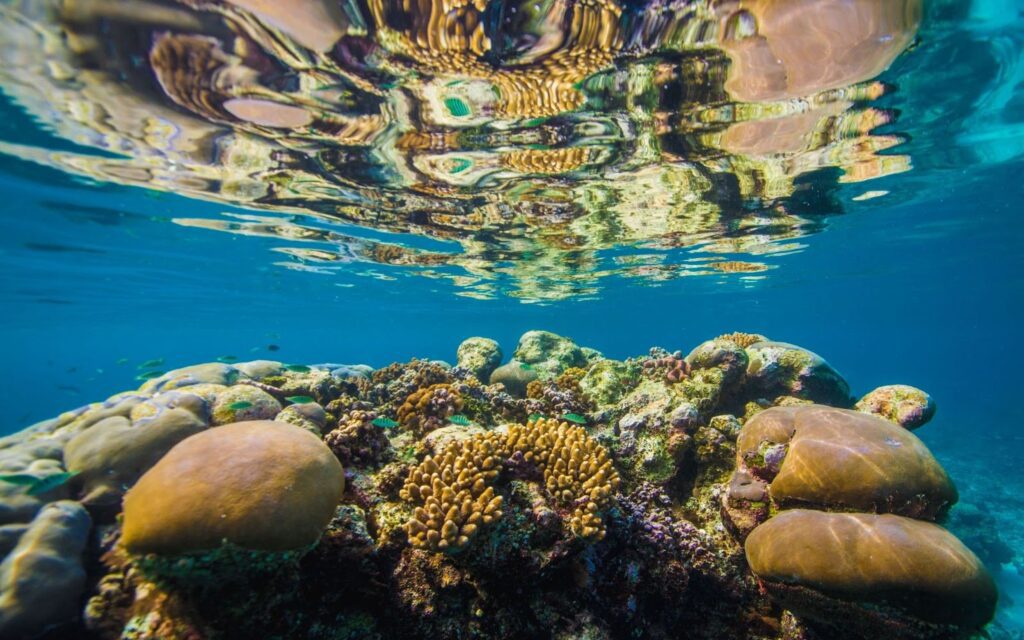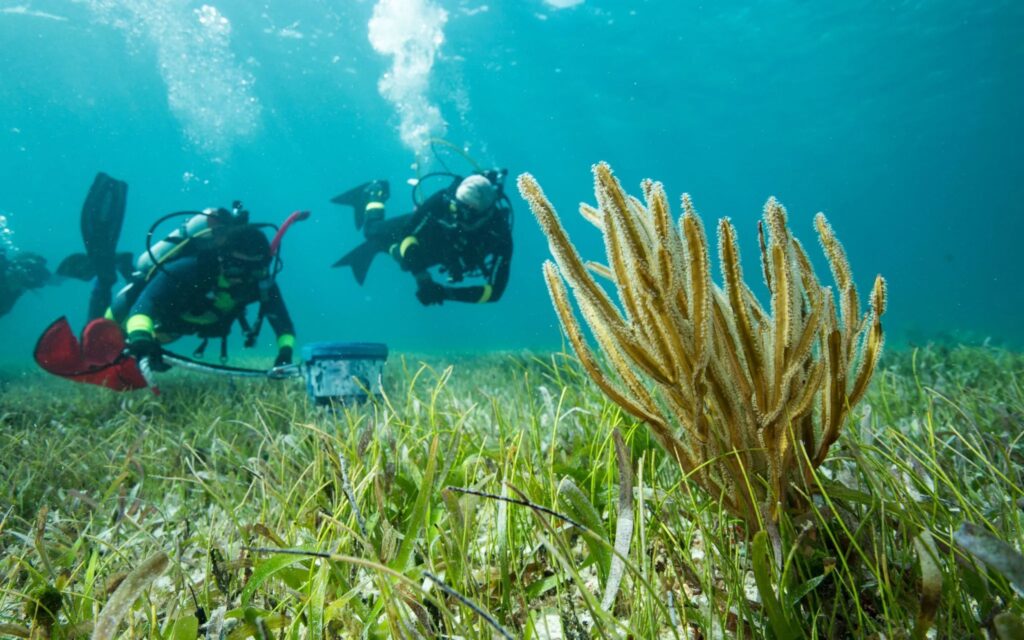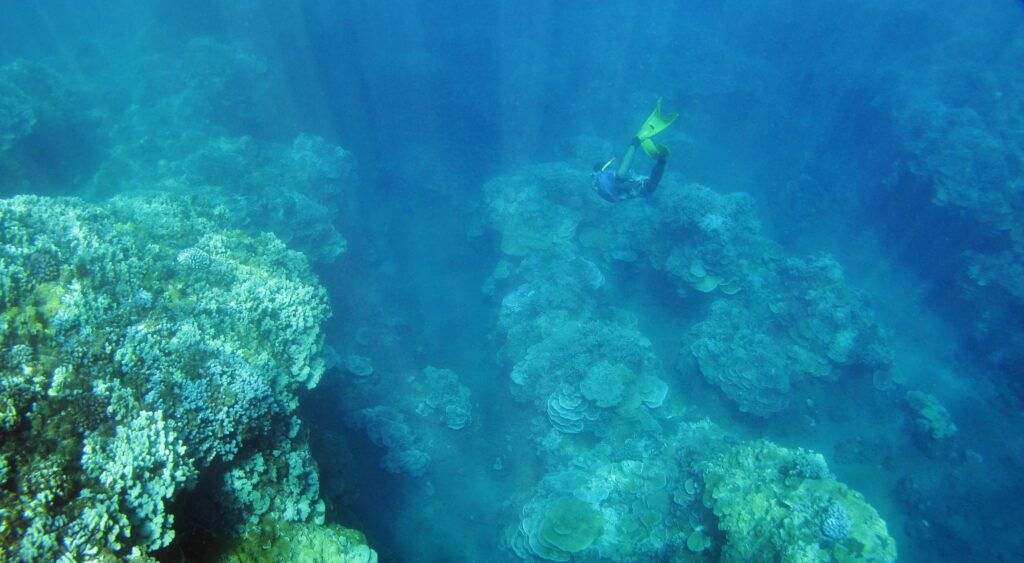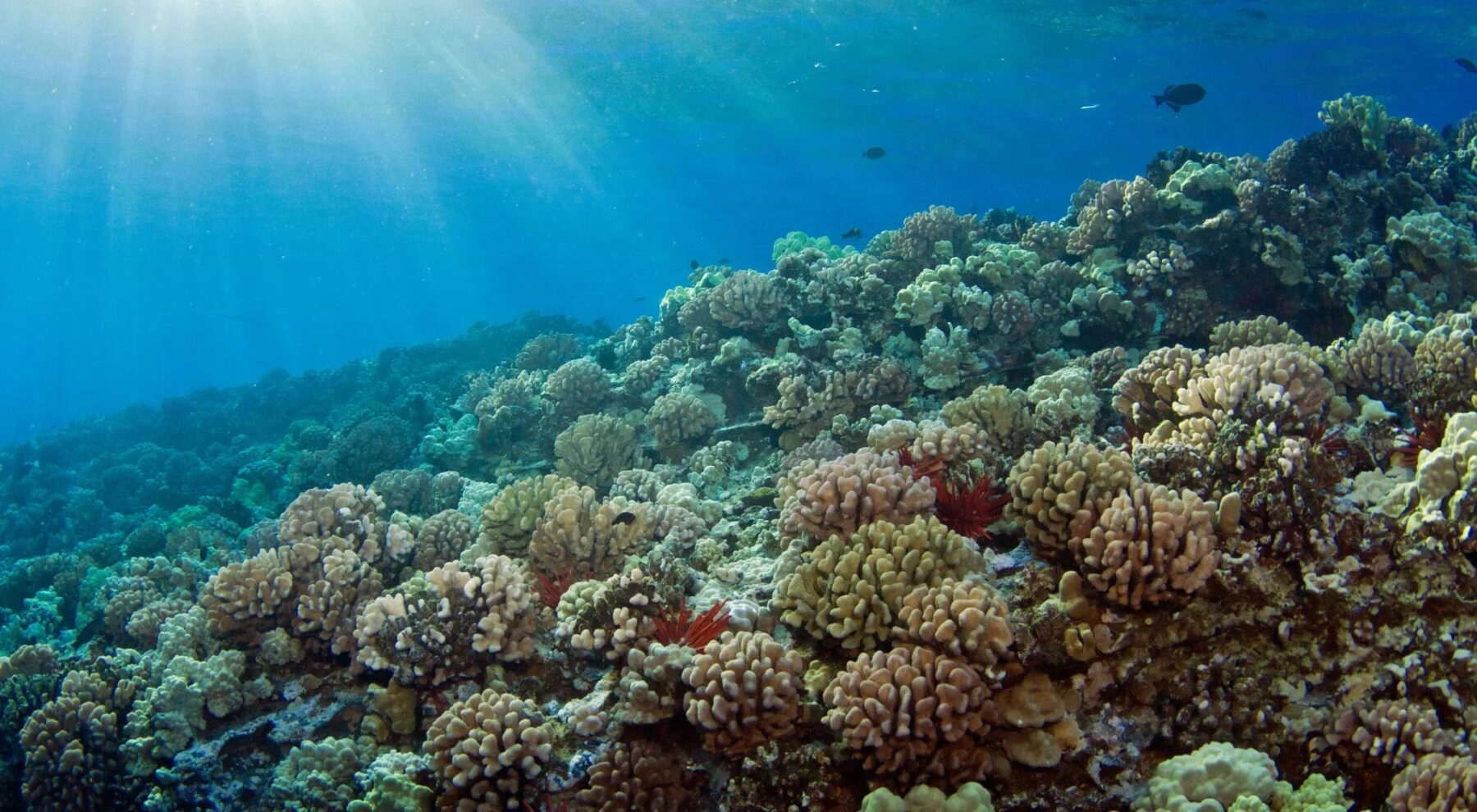Coral reefs play an essential role throughout the world, but they’re especially important to Hawaii. The state’s reefs provide habitat for nearshore fisheries, protect coasts from waves and storms, and support tourism and fishing industries worth billions of dollars. They also provide a source of food and materials.
That’s why government officials and environmentalists are racing to protect Hawaii’s coral reefs, which are threatened on several fronts. These range from storm damage and overdevelopment to “bleaching,” which happens when water becomes too warm and causes the corals to expel the algae living in their tissues and turn white.
According to a report from Hawaii’s Division of Aquatic Resources, the state’s coral reefs have seen a recent uptick in bleaching events – including “unprecedented amounts” last decade that killed up to 50% of the reef in some locations.

To contain the damage, the Nature Conservancy has devised an innovative solution: a coral reef insurance policy on behalf of Hawaii. The policy, announced in November, is the first U.S. coral insurance contract of its kind, Reuters reported. It will provide funds for repair work when storms damage reefs.
The $110,000 insurance premium will give the state of Hawaii up to $2 million of insurance protection for its coral reefs until the end of December 2023. The policy covers most of Hawaii and begins paying out at 50 knots of wind.
The move is part of a global “Reef Brigades” strategy to recover reef fragments, store them in ocean or shore-based nurseries, and then re-attach them with adhesives such as cement and epoxy.
Costs range from $10,000 to $1.5 million per hectare when the repair job requires new corals grown in a nursery. One advantage of insurance policies is that they bring more financial might to repair efforts.
“To date, conservation has really relied on philanthropy and government grants. By using insurance, we’re also tapping into the private sector for this work,” Eric Roberts, a senior risk and resilience program manager at The Nature Conservancy (TNC), told Reuters in an interview.

As The New York Times reported, the plan involves a series of actions that began with the Nature Conservancy’s insurance policy on coral reefs surrounding the islands of Oahu, Molokai, Lanai, Maui, and Hawaii, all of which are on public land. If a strong enough storm damages the reefs, the Nature Conservancy will get a payout from the insurance company within about two weeks.
The conservation group will then ask the state of Hawaii for a permit to repair the storm damage. If government officials say yes – which is likely – the Nature Conservancy will use the insurance money to pay teams of divers to begin repairing the damage. Divers have about six weeks after the storm to repair the damage before broken coral starts to die.
“We think we can help our Hawaii state government put this into place as a pilot project,” Makale’a Ane, who leads community engagement and partnerships in Hawaii for the Nature Conservancy, told The New York Times.

This isn’t the first time environmental groups have partnered with government bodies to insure against coral reef damage. The idea was first tested in 2019 by the Mexican state of Quintana Roo. The government teamed with local tourism companies to buy an insurance policy to cover their share of the Mesoamerican Reef.
A separate policy was later taken out by the MAR Fund, an environmental group, on the remainder of the Mesoamerican Reef, which includes other parts of Mexico and Belize, Guatemala, and Honduras. Policies were paid out for one storm in Mexico in 2020 and another in Belize two years later. Quintana Roo paid 6 million Mexican pesos, or about $308,000, to renew its policy last July.
“Yes, it can be a lot of money,” Secretary of Ecology and Environment Josefina Huguette Hernández Gómez told Reuters. “[But] the cost is higher when you have the loss of biodiversity or corals than what you pay in insurance.”





